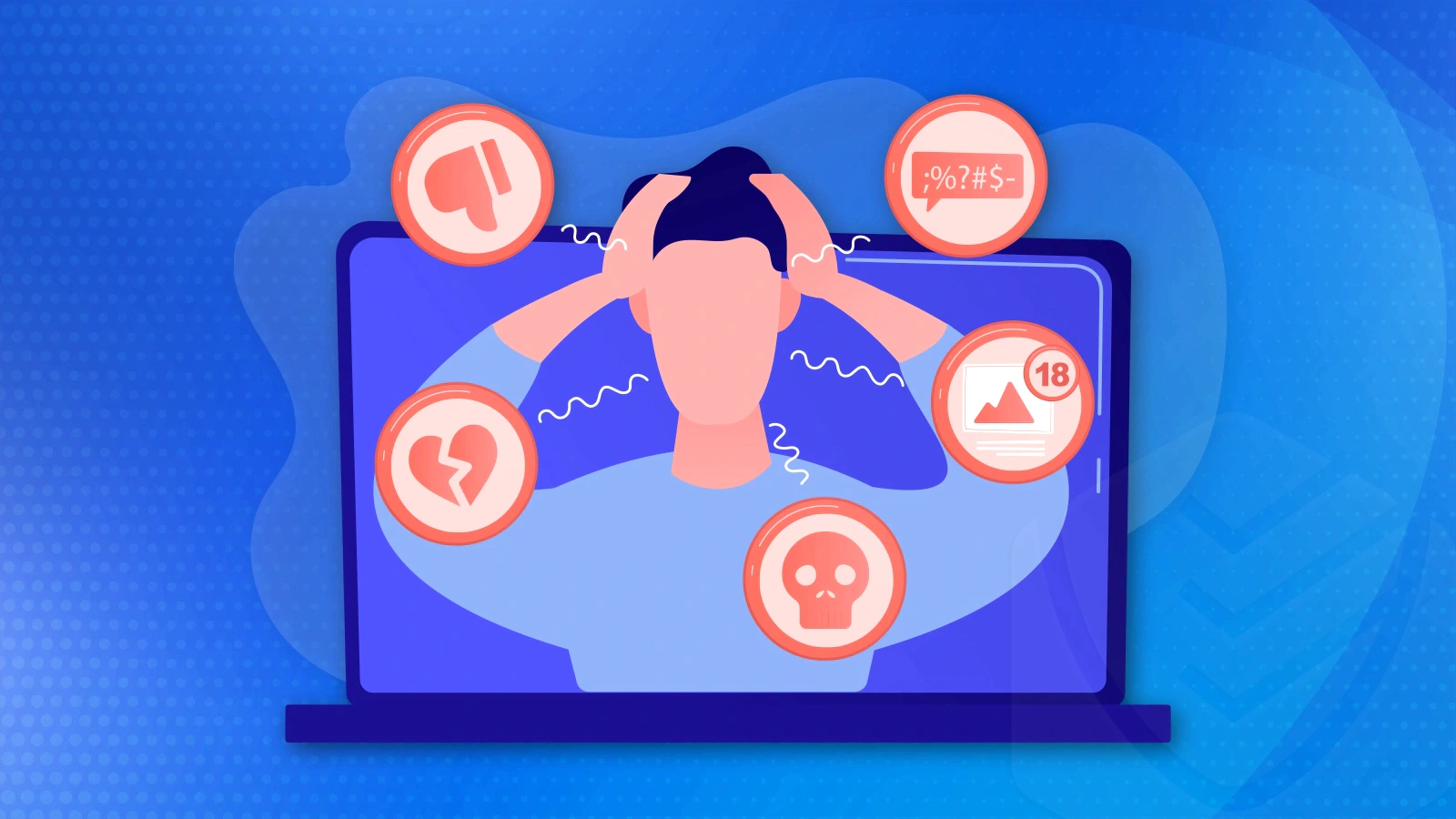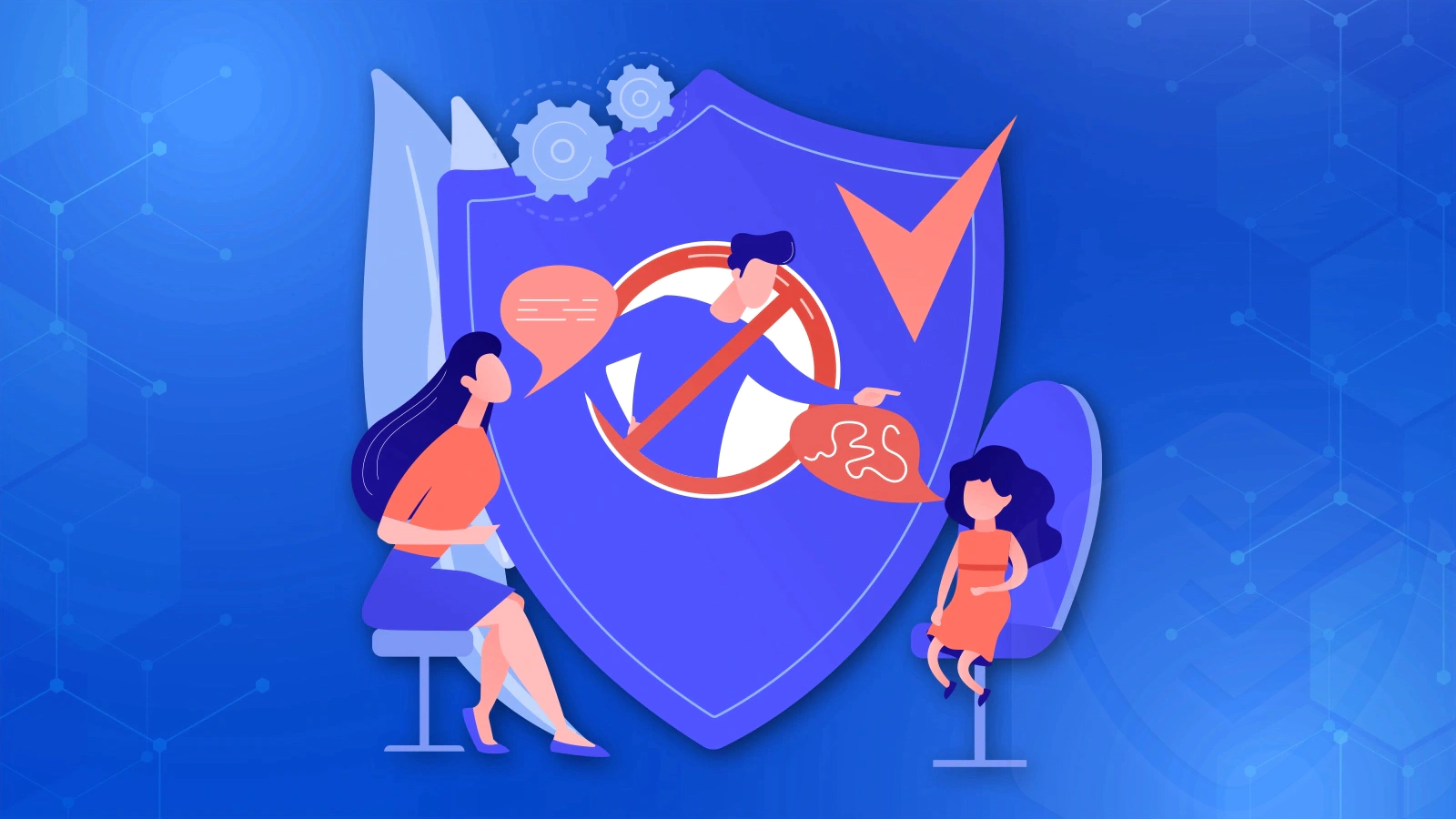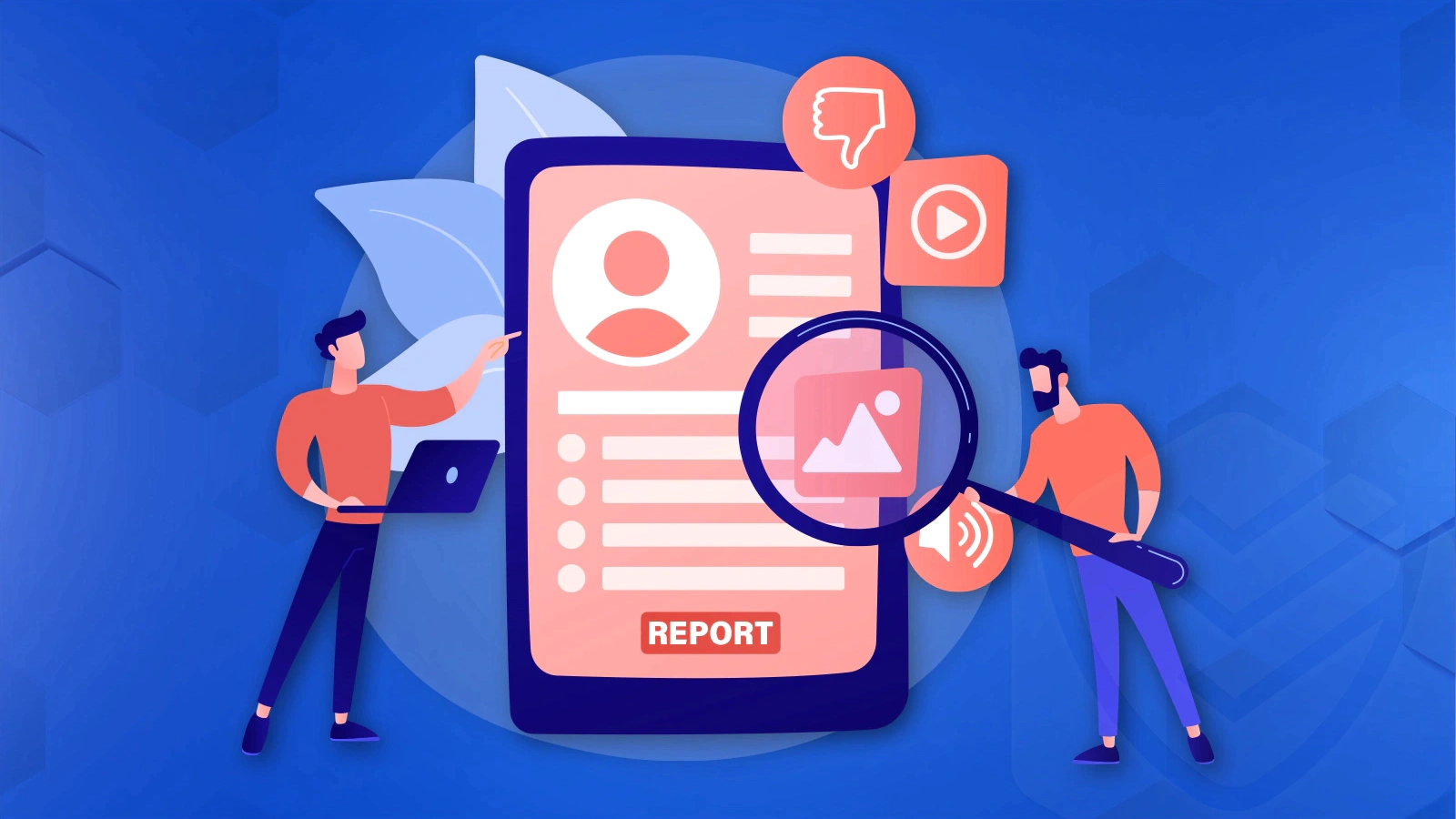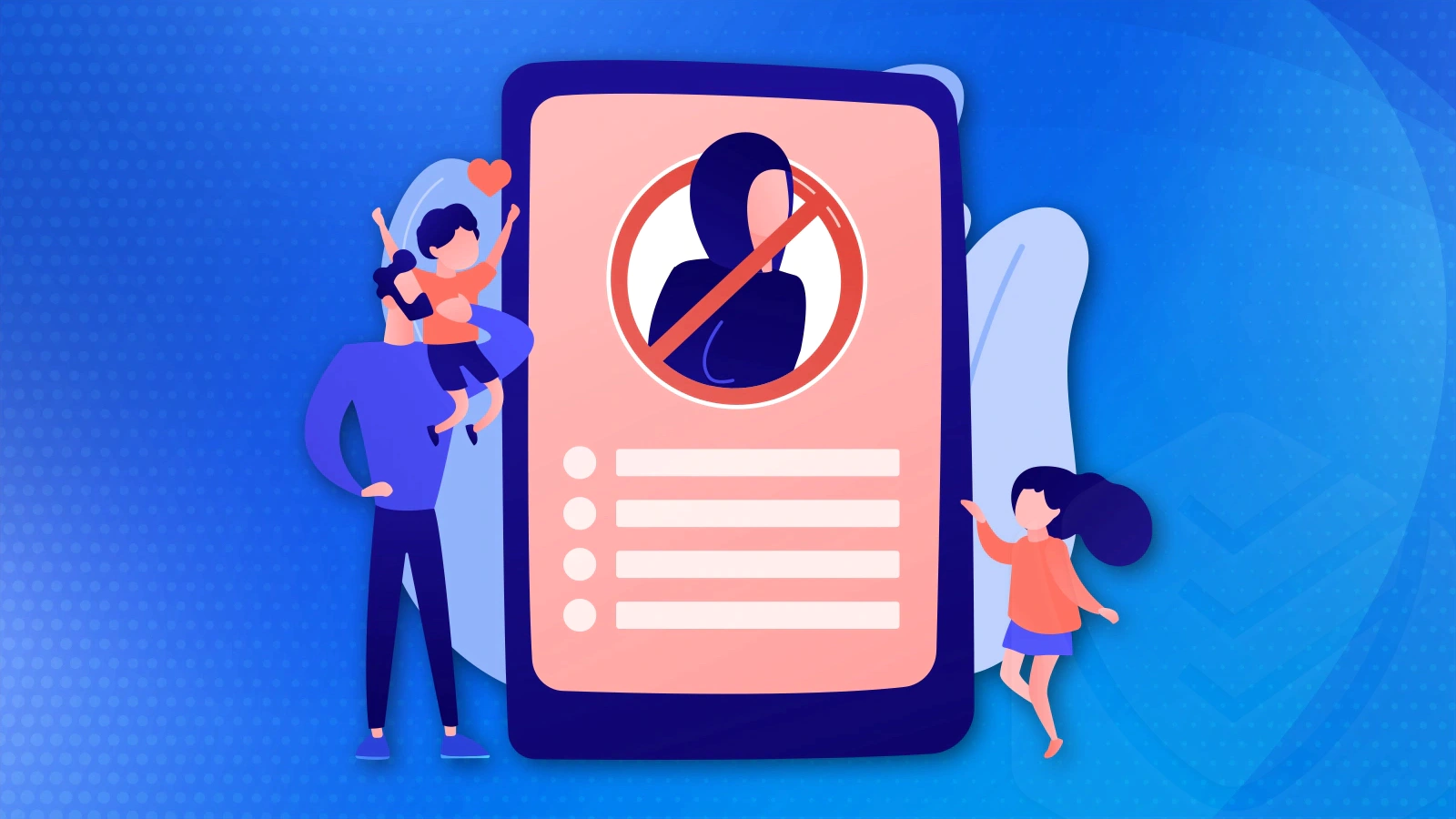Cyberbullying is a serious issue. Considering that 59% of U.S. teens have experienced cyberbullying, it’s imperative that kids, parents, and educators understand what cyberbullying is and how to counter it to prevent tragic outcomes.
In this article, you will learn:
What cyberbullying is
Types of cyberbullying
Cyberbullying on social media and games
Anti-cyberbullying laws
How to identify cyberbullying
How to deal with and prevent cyberbullying
And more…
Let’s begin!
What is cyberbullying?
Cyberbullying is the act of bullying (threatening, harassing, denigrating, etc.) through the use of technology. It can involve spreading rumors or false information, sending threatening or offensive messages, or posting embarrassing images or videos of someone without their permission.
Anyone can experience cyberbullying, but children are more frequent targets because they are more susceptible to its effects. Emotional anguish can result from being cyberbullied, leading to depression, anxiety, and other mental health issues.
In contrast to traditional bullying, victims can be attacked anywhere since the cyberbullying medium is the internet. Over 95% of teens have a smartphone, and many use social media apps that are commonly utilized for bullying.
Cyberbullying can have serious, long-lasting effects. Victims may be emotionally and physically affected, experiencing feelings of frustration, shame, or confusion. Additionally, their sleep may be disrupted, resulting in fatigue and poor performance at work or school. Unfortunately, there have been many instances where victims took their own lives.
The reputation of both the victim and the attacker can deteriorate as well. A permanent public record of a person's online activity is created by what they share online. If educational institutions, potential employers, or other people investigating the individual gain access to this information, it will negatively affect their perception of the person—whether they are the victim or the harasser.

Cyberbullying is the use of technology to harass, threaten, or otherwise harm others.
Types of cyberbullying
Cyberbullying can take many forms. Here are the most common.
Harassment – This occurs when someone repeatedly sends offensive messages to another person. Examples include name-calling, insults, and threats. For instance, a group of students may spread false information about someone based on that person's race, religion, or ethnicity.
Flaming — This involves sending someone a message that is irate, rude, or vulgar in order to provoke a reaction.
Trolling — Trolls are bullies who intentionally stir up conflict by making offensive online comments. While trolling is not always cyberbullying, many trolls actively abuse other people online, often targeting those they don't personally know.
Doxing/Outing — Doxing or outing involves disclosing someone's secrets or personal information without their consent, frequently with the intention of humiliating or hurting them.
Trickery — Bullies approach their target and deceive them into believing they are trustworthy. Once the bully obtains sensitive information from the target, they disclose the victim's secrets and personal information to third parties.
Revenge porn — This occurs when someone posts sexually explicit content of someone else online without their consent. Typically, ex-partners who wish to humiliate and harm their former partners post such pictures or videos.
Exclusion — This entails purposefully excluding someone from online groups or activities to make them feel like an outcast.
Impersonation/Fraping: This involves pretending to be the victim by breaking into their social media accounts or stealing their identity, then sending or posting content that damages the victim.
Masquerading — When bullies want to harass a victim online, they create a false online persona or profile. In these situations, bullies are often well-known to the victim.
Cyberstalking — This is a particularly severe type of online bullying that may include threats of actual physical harm to the target. It frequently occurs alongside offline stalking. Cyberstalking is a crime, and the perpetrator may face a restraining order, probation, or even jail time.


Cyberbullying takes various forms, such as direct harassment, doxing, exclusion, and cyberstalking.
Cyberbullying occurs mostly on social media platforms and chat/instant messaging apps. Bullies will often hide their identities behind fake or anonymous accounts. Yet, they often use their real profiles to post inflammatory comments or content about their victims.
Social media apps are highly addictive, and although teens enjoy using them, they come with several risks, such as the following:
Sharing harmful or adult content
Adults pretending to be kids can interact with minors
Dangerous content can be posted on forums and chat apps
Seeing harmful acts on live streaming platforms
Predators or cyberbullies can obtain personal information about someone
Attackers can remain anonymous on many chat or social platforms
Social media and instant messaging platforms where cyberbullying occurs most often include:
Snapchat — As of 2022, Snapchat had over 300 million users, with teenagers making up more than three-quarters of them. One of its best-known features is the disappearing messages. Snapchat has a higher prevalence of cyberbullying than other social media apps.
Instagram — Instagram is used by 72% of teenagers worldwide, according to the most recent statistics. Given that there are more than 1.1 billion Instagram users worldwide, that is a sizable number. Users can share photos, videos, and stories. The app has been used in numerous instances of cyberbullying.
TikTok — TikTok is a massively popular social media app that enables users to create and share short videos. Teenagers love it because it's a fantastic way to showcase their talent and creativity. However, TikTok does not have an age verification system, which puts kids at risk.
Twitter — Twitter is a great tool for keeping up with news and events worldwide. One of the many risks of Twitter is that anyone can post whatever they wish, as tweets are largely unmoderated.
Facebook — With approximately three billion monthly active users, Facebook is the world's most widely used social networking site. The platform is accessible to anybody over the age of 13. Facebook is a great way to reconnect with old acquaintances, but privacy concerns have long plagued the site.
Omegle — This chat app enables users to communicate with strangers. Kids like it since it's anonymous and simple to use. However, this anonymity can also be harmful, giving cyberbullies the ideal platform.
Whisper — Whisper is a mobile app that lets users anonymously send each other private messages. Predators can use Whisper to communicate with children and track them. Also, cyberbullies are often not held accountable for hateful comments as they can remain anonymous.
Twitch — Twitch is a live streaming service for broadcasting video games and other creative content. Users can watch other people's streams, chat with other users, and live stream their gameplay on Twitch. Some Twitch users are trolls that post hateful comments in public chats.
Discord — An app that allows you to chat in public and private chat rooms and send private messages. Players frequently use this app to chat while playing video games. It is also a frequent location for online abuse.
Reddit — A well-known website that compiles news, web content, memes, and discussion threads. Although users frequently experience cyberbullying, moderators will try to prevent cyberbullying and maintain a secure environment for all users.
Telegram — A messaging app that enables users to make calls, send texts or chats to other users, and delete messages from their phone using a timer. Like other messaging apps, Telegram can be used to send dangerous messages, attachments, and links.
Tumblr — A social networking website with a monthly user base of over 74 million, allowing you to post short blogs and media. Online bullies frequently post derogatory things about people they don't like.
WhatsApp — An application for private messaging that enables users to text and send images, videos, and location data to their contacts. Bullies can send direct messages to someone, but they also harass their targets in WhatsApp groups.
YouTube — A video-sharing website that lets users upload and share videos. Despite the strict moderation of YouTube comments, there have been numerous cases of users or content creators being bullied and harmful videos of someone being posted.

Cyberbullying occurs mostly on social media platforms, where bullies often create fake identities.
Cyberbullying in online gaming
While there are potential advantages to gaming, it is also a place where cyberbullying can occur. Anonymity allows players to harass, intimidate, and occasionally gang up on other players who are not performing well or belong to a different ethnic group, religion, etc.
More than 215 million Americans, representing over 66% of the population, regularly play video games. Additionally, 80% of multiplayer gamers have experienced online harassment. This shows that cyberbullying in gaming is a widespread issue, potentially affecting millions of people.
Additionally, some players might use the game to trick others into giving them their usernames and passwords. They may even publish the private information of others online (aka doxing).
Another problem is that attackers might send malicious links that, when clicked, will download malware such as spyware, trojans, adware, or ransomware. Some of those links may even be designed for phishing, in that the victim may inadvertently share their personal information on a fake website.
How kids can deal with cyberbullying in games
Here’s what gamers should do to stop cyberbullying should they encounter it:
Inform the player who is being mean to stop.
Block and unfriend the bully from the game and social media.
Report the bully to the game platform, team, and community.
Stop playing the game for a while.
Find support from a parent or trusted adult.
How to prevent cyberbullying while gaming
You can keep your kid safe while they are gaming by following these tips:
Learn how the game works and what your child is exposed to by playing it with the child or by watching the game with them.
Discuss who is playing the game with your child online.
Understand the security risks associated with the gaming community. Research the games your child plays online.
Set the privacy and security options for your child's games and apps.
Set limits on how much time a kid can spend playing video games.
Maintain open communication with your child about their online activities.

Cyberbullying in gaming is a widespread issue. Millions of gamers are potential targets.
Laws against cyberbullying
Most schools take bullying seriously and will do something about it. So, inform your school if other students are harassing you online. However, not all jurisdictions have laws prohibiting bullying, particularly cyberbullying. To punish cyberbullies, many nations rely on other pertinent laws, like those against harassment.
Most US states have school sanctions for cyberbullying. A cyberbully may face anything from school suspension or expulsion to jail time, depending on the state laws.
For instance, in California, using an electronic device to make someone fear for their life is a misdemeanor offense that carries a maximum one-year jail sentence or a fine of $1,000.
In Florida, bullying of any K–12 student or employee is prohibited under the Jeffrey Johnston Stand Up for All Students Act. Cyberbullying, also known as "bullying through the use of technology or any electronic communication," is specifically mentioned. Districts may have different levels of enforcement.
In Missouri, cyberbullying is defined as bullying using a message, text, sound, or image via an electronic device. A person may be charged with harassment if they threaten to harm another person on social media. If the victim is a minor and the defendant is 21 or older, the offense, which is typically a misdemeanor, may instead be charged as a Class E felony.
Some US states also have laws against bullying if it impairs academic performance. You can learn about the laws and regulations in each state, including whether they address cyberbullying.
Get legal counsel from a criminal defense attorney if your kid has been the victim of cyberbullying. They can describe the current laws against cyberbullying and harassment in your state.
However, keep in mind that punishment is not always the best method to change bullies' behavior. It’s generally best to undo the damage and restore the connection between the victim and the bully.

Most US states have school sanctions for cyberbullying.
Identifying cyberbullying
The following are some red flags indicating a child may be engaged in online bullying:
Reacting emotionally to what is happening on their device
Covering over their screen or gadget when others are nearby
Avoiding discussions about what they are doing on their device
Social media accounts disappearing or being replaced
Withdrawing or losing interest in activities and people
Significant increase or decrease in device usage
Changes in appetite
Alterations in sleep patterns
Reluctance to attend school
Decline in academic performance
Complaints of physical illness
How parents can deal with cyberbullying
Dealing with cyberbullies is more difficult because parents can’t easily know when their child is being bullied. Many children are reluctant to talk to their parents or teachers about their unpleasant experiences.
Additionally, the attackers are often undetectable or anonymous online. As a result, finding and addressing the bully is challenging.
However, there are some steps parents can take. If you believe your child is a victim of online bullying:
Encourage your youngster to speak up. It's crucial to let them know they can approach you with any issue, whether big or small.
Talk to your child calmly. Ask questions to determine what's happening, how it started, and who is involved.
Help your child or teen understand that it's not their fault. They have many qualities to be proud of.
Include your kid in the decision-making process. Inform them of the actions you will take and the steps they can follow. This will help them feel less alone and guilty about their actions.
Advise them not to reply or retaliate. Bullies sometimes seek a reaction because they believe it gives them control, and you don't want to empower a bully further.
Emphasize that taking revenge on a bully is not a good idea. It might make things worse for everyone involved. Your child could become a bully, potentially sparking a chain of cruel acts. They should remove themselves from the situation if possible.
Let your child decide whether to ask the bully to stop. They should feel comfortable doing so. They should be clear about their stance and state that they will no longer tolerate this treatment. Allow them to practice beforehand with you or a friend.
Block and ignore the bully. Block any contacts involved in online bullying to prevent your child from being contacted by them. If the cyberbully is anonymous, you can still block them in the app they’re using.
Report the bullying in the app. Bullying reporting tools are available on numerous social media platforms and websites. We’ll discuss more about reporting below.
If the cyberbully is a classmate, block them on social media and notify the school about their behavior.
Keep screenshots and messages that demonstrate bullying has occurred. If the bullying worsens and other parties, such as law enforcement, need to intervene, this can be useful. Don't forget to back up these files, but ensure nobody else can access them without your permission, as doing so could seriously harm your child.
Contact law enforcement if you think your child is in danger or other criminal behavior is occurring.
Seek support for your child. Consult a guidance counselor or mental health specialist to determine whether your child requires more professional assistance.


Talk to your child calmly. Ask questions to uncover what's happening, how it began, and who is involved.
How to report cyberbullying
It's crucial to note and report instances of cyberbullying so that the problem can be resolved.
The first step is to preserve evidence of cyberbullying. Record the dates, times, and details surrounding any instances of cyberbullying. Save and print screenshots of emails and text messages. Use this evidence when reporting cyberbullying.
The next step is to report the bullying. You can report to:
The school — Inform the school of your child's abuse if it involves classmates. The school might be able to address and resolve the problem. Cyberbullying often overlaps with physical bullying and can disrupt the learning environment at school. Many states require schools to address cyberbullying in their anti-bullying policies.
Other parents — Talk with the bully’s parents to develop a plan for resolving the situation.
Social media apps or games — Parents and teenagers can report the cyberbully using the in-app capabilities on the platform where the bullying occurred, even if the attacker is anonymous. The parent company may penalize users who violate the terms of service. Here are guidelines for reporting harassment on the five most popular social apps:
Law enforcement — You should inform law enforcement when cyberbullying involves threats of violence, child pornography, sexually explicit photos or videos, stalking, taking photos of others without consent, and hate crimes. For more information, review the laws regarding harassment in your state.


To report a cyberbullying incident, save the evidence and report it to the social media platform, school, parents, or police.
If your child is a cyberbully
If your child is cyberbullying someone, you can take the following actions:
Do not criticize your child and maintain your composure. Otherwise, they might lash out or be less helpful in finding a solution. Before speaking with your child, be sure you're in the right frame of mind. Your conversation should be intended to foster understanding and assist you in coming up with a solution.
Investigate the situation. Try to understand their point of view and allow them to address the issue. They may be angry and afraid because they have been hurt by someone else or are stressed. Ask when the cyberbullying started, who the victim was, and if they can show you evidence.
Apologize on your child's behalf. Expressing regret on your child's behalf is crucial if they have bullied someone. This could aid in mending the harm.
Determine the consequences. Establish penalties that correspond to the severity of their behavior. This can involve taking away their devices or limiting access to specific apps. Parental control software is useful for monitoring their activity. Your child needs to demonstrate they are capable of acting respectfully.
Encourage your kid to feel compassion for others:
Talk to your child about why their actions are wrong and how they can harm other people. They can modify their behavior and make better choices in the future.
Share news articles or personal experiences to demonstrate the effects of cyberbullying.
Consider signing them up for volunteer work, mission trips, or other charitable activities.
Consult a specialist for assistance. It might be necessary to seek help from a therapist or another expert, especially if your child exhibits risky behavior or struggles with anger management.


If your child is a cyberbully, seeking assistance from a therapist or another expert might be necessary.
Cyberbullying prevention
To protect your children from cyberbullying, follow this plan:
Make sure your child has a healthy sense of self-worth. If a child is insecure or has low self-esteem, they are more likely to experience cyberbullying.
Be a good example to others. Show your child how to respond politely to criticism or ignore it. Teach your child that, although rude words or actions can make you angry, they don't diminish the value of who you are.
Look for characters in a book or a movie they can relate to. Fiction demonstrates solutions to problems, particularly for younger children. Use your child's favorite characters to show how they overcome challenges.
Help them develop a self-love mantra that they can repeat daily in front of a mirror. You might choose something like, "I am powerful. I am good. I am intelligent, and I stand up for others!"
Practice yoga or meditate together. In addition to building your child's resilience and self-esteem, practicing yoga or meditation can help reduce their anxiety.
Promote body positivity. Teach your kids to be proud of their shape and that all bodies are beautiful. As a result, they will feel more confident and be better protected from harmful online influences.
Help your child establish healthy friendships with their peers. For example, organize enjoyable activities with their friends. Bullying, both online and offline, is less likely among children who have supportive friendships. Bullies are often deterred when a target's friends come together to support them. Friends can also help with gathering evidence and reporting inappropriate behavior.
M onitor your child's internet use. Keep an eye on your child's online activity, including their social media profiles, browsing history, and the people they interact with.
Discuss online safety and privacy. Ensure their privacy settings on social apps or games keep them secure. Decide, for instance, who is allowed to view their profile, send them direct messages, or leave comments on their posts.
Teach them how to manage passwords. If your child is a pre-teen, you might want to know their usernames and passwords. If your child is a teen, they shouldn't share credentials with anyone.
Encourage them to exercise caution when sharing or posting content on social media. That information might remain online indefinitely and be used against them. Also, they should avoid disclosing personal information like their school's name, address, or phone number.


Ensure your child has a healthy sense of self-worth to help them avoid bullying.
Using parental controls
Parental control software can help you prevent your child from being contacted by bullies by allowing you to block websites, filter content, and monitor their online activity. This is especially important for younger children.
When using this type of software, parents should consider the child's age, device usage, and digital behavior. The same limitations should not be placed on a teenager as on a nine-year-old.
Note that your child shouldn't perceive the security and privacy precautions you take as punishment. Ensure your child understands that you are there to protect them. Additionally, be open and honest with your child by informing them about everything you can see regarding their online activities. Assure them you are not spying on them.
There are many free parental control tools available. Most of them can censor content, block websites, or monitor kids' online activities, including social media.
Although there are some decent free software options, more comprehensive packages typically require payment. Solutions like Bark, Net Nanny, and Qustodio are good choices. Alternatively, you can choose an all-inclusive antivirus program with parental controls like Bitdefender, Norton, or McAfee.
For more information on parental controls, read our definitive guide.

Parental control software can shield kids from online bullying, data theft, and exposure to adult content.
Tips for teachers
As a teacher, when and how should you intervene in a cyberbullying situation?
What you do after establishing that cyberbullying has occurred may be governed by school, district, and/or state policies.
The next step will depend on whether the bullying occurred on a device provided by the school, after school hours, or during the school day.
To ensure the intervention is successful and adheres to policy, involve the students' families, school administrators, and counselors.
Teachers can take these steps to address or prevent cyberbullying in the classroom.
Speak to the child privately about their cyberbullying experience. They may have evidence on their phones.
Discuss the topic of cyberbullying with parents. If required, act as a mediator between the child, parent, and school.
Explain the media literacy skills you are helping students develop. Parents are more likely to reinforce the messages at home when they are informed and on board.
Become more digitally aware to understand kids' online behavior and how it relates to cyberbullying.
Create activities that promote introspection. Ask children to identify what they think and feel, to express these thoughts and feelings, and to consider other people's perspectives.
Encourage children to develop their emotional intelligence to build self-awareness, self-control, and empathy for others.

Increase your digital awareness to better understand children's online behavior and its connection to cyberbullying.
In summary, here's what cyberbullying is and how to protect kids:
Cyberbullying involves harassing, threatening, or harming others using technology.
There are many types of cyberbullying, such as harassment, trolling, doxing, revenge porn, exclusion, and more.
Cyberbullying occurs on social media, SMS, forums, email, live streams, and gaming.
Popular social media apps where teens are at risk include TikTok, Snapchat, Instagram, Facebook, and Twitter.
Many children experience cyberbullying in online games as well. One-third of the US population actively plays games.
Most US states have school sanctions for cyberbullying. A cyberbully may face school suspension, expulsion, or even jail time.
Signs that a child is being cyberbullied may include increased withdrawal, changes in eating and sleeping habits, declining grades, and more.
To help your child cope with cyberbullying, talk to them and create a plan. Encourage them to ignore and report the bully to the social app, school, or police.
If your child is a cyberbully, investigate the situation, apologize on their behalf, establish rules, teach them empathy, and consider speaking to a therapist.
To help your child avoid being cyberbullied, develop their self-esteem, assist them in establishing friendships, discuss online privacy rules, and monitor their internet usage.
Use parental control software to oversee and manage the interactions your child has online.
Teachers should follow school or state regulations when intervening in cyberbullying incidents. They should speak to the victim and their parents, and teach children digital awareness and emotional intelligence.
Octav Fedor (Cybersecurity Editor)
Octav is a cybersecurity researcher and writer at AntivirusGuide. When he’s not publishing his honest opinions about security software online, he likes to learn about programming, watch astronomy documentaries, and participate in general knowledge competitions.